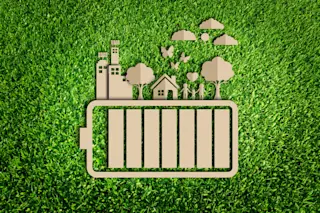(See DISCOVER's earlier coverage of "Anything Into Oil" here and here. See the follow-up article here.)
The smell is a mélange of midsummer corpse with fried-liver overtones and a distinct fecal note. It comes from the worst stuff in the world—turkey slaughterhouse waste. Rotting heads, gnarled feet, slimy intestines, and lungs swollen with putrid gases have been trucked here from a local Butterball packager and dumped into an 80-foot-long hopper with a sickening glorp. In about 20 minutes, the awful mess disappears into the workings of the thermal conversion process plant in Carthage, Missouri.
Two hours later a much cleaner truck—an oil carrier—pulls up to the other end of the plant, and the driver attaches a hose to the truck's intake valve. One hundred fifty barrels of fuel oil, worth $12,600 wholesale, gush into the truck, headed for an oil company that will blend it with heavier fossil-fuel oils to ...














